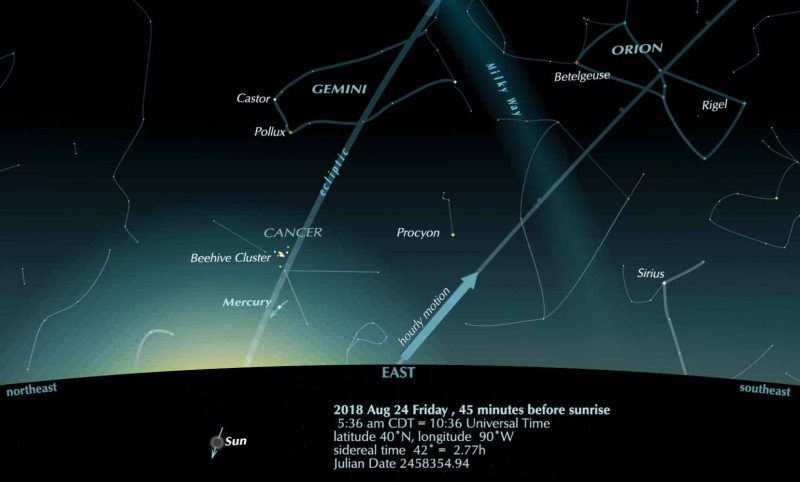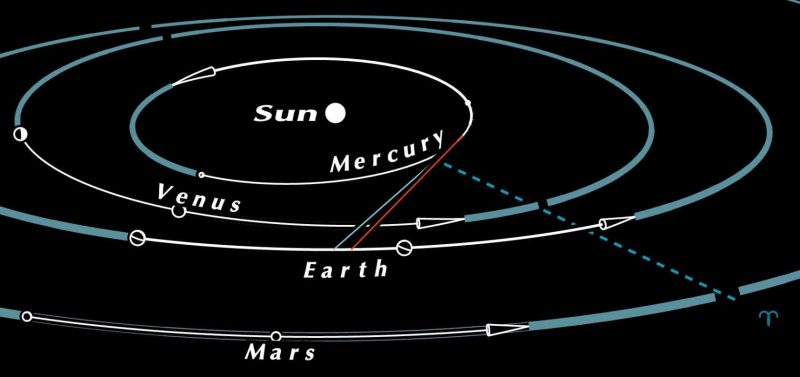Want to see Mercury? If you do spot it before dawn in the coming two weeks, you’ll be joining an exclusive club. It’s said that only a small fraction of Earth’s population ever knowingly sees our solar system’s innermost planet.
If you live in the Northern Hemisphere, or southern tropics, these next two weeks – late August and early September 2018 – present a fine time to spot Mercury in the morning sky. Mercury will be harder to catch from temperate latitudes in the Southern Hemisphere (South Africa, southern Australia and New Zealand) because, from the far-southern part of Earth’s globe now, it’s more deeply buried in the glare of morning twilight.
Check out the chart at the top of this post. It doesn’t show all the bright stars in the morning sky, but it shows some of the bright ones. Pollux and Procyon beam as 1st-magnitude stars whereas Castor is the sky’s brightest 2nd-magnitude star. Pollux and Castor are noticeable for being bright and close together. With Mercury, Pollux and Procyon make a large equilateral triangle that rises before daybreak this week.
As mentioned, there are other bright stars in the morning sky now. In fact, what we in the Northern Hemisphere know as the Winter Circle is ascending in the east before dawn. These are the same stars up on Northern Hemisphere winter evenings (Southern Hemisphere summer evenings). To see more of the bright stars up before the sun now, check out the chart below:


At mid-northern latitudes (United States, mainland Europe, Japan), Mercury rises about 1 1/2 hours before the sun. Even from northerly latitudes, however, Mercury won’t be an easy target. Mercury is easily as bright as a 1st-magnitude star, but – as the innermost planet – it stays near the sun in our sky. That means you’ll often catch Mercury against a twilight background, making it appear dimmer than it would against a black night sky. Also, it’s often seen low in the sky, amidst the atmospheric murkiness near the horizon.
Given clear skies, Mercury should be visible to the eye alone, but binoculars always come in handy for any Mercury search.
Try to get up no later than 90 minutes before sunup and find an unobstructed horizon in the direction of sunrise. Better yet, stand on a balcony or a hilltop so that you can see farther over the horizon. Then, as darkness gives way to morning twilight, scan for Mercury over the sunrise point on the horizon.
Don’t know when the sun (or Mercury) rises in your part of the world? Try one of these recommended sky almanacs.
Don’t get discouraged if you miss Mercury on August 25 or 26. Mercury is actually brightening day by day, and should be in good view in the morning sky for another week or two. Good luck!

Bottom line: Sure, the evening sky has four bright planets now. But – for the coming 2 weeks – the morning sky has Mercury! Here’s how to spot it.












